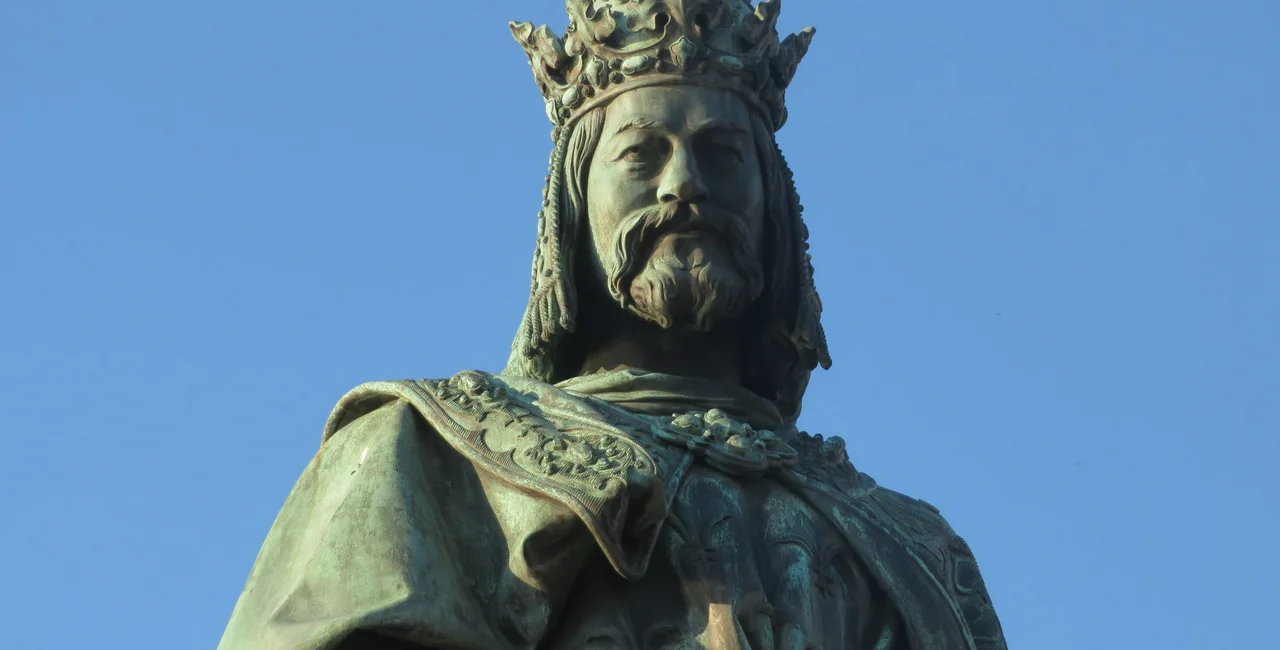One of the oldest universities in Europe marked 675 years this week. Charles University was established by a charter signed by Emperor Charles IV on April 7, 1348, as the first “studium generale” in central Europe.
The school came around as part of Charles IV’s efforts to make Prague an international center of study. He established the New Town district and began new construction work at Prague Castle around the same time, and would soon start work on Charles Bridge.
PARTNER ARTICLE
Older Europe universities in Europe can only be found in Italy, Spain, France, and the UK. Charles IV had seen such schools in Paris, and wanted to make Prague a similar center of learning.
Three founding dates
The school actually has three founding dates, though the middle one is used most often. Charles IV needed to get permission from Pope Clement VI, who signed a bull granting that right on Jan. 26, 1347. Charles IV signed an additional charter as “king of the Romans” on Jan. 14, 1349. The first classes were held that year.
At first, the school was called the University of Prague and went through several names over the centuries. Charles University (Univerzita Karlova) wasn’t used until 1920, during the First Republic. Similarly, Charles Bridge and Karlovo náměstí (Charles Square) didn’t take those names until hundreds of years after Charles IV passed.
The organization of the school was quite different. There were four faculties: art (philosophy), theology, law, and medicine. This was inspired by the University of Paris, today known as the Sorbonne. Today there are 17 faculties, with campuses not only spread across Prague but also Hradec Králové and Pilsen.

Four faculties, four 'nations'
The school also originally had four “nations” because students from different regions spoke different languages. Local students went into the Bohemian nation, which originally made up about 20 percent of the students. The other nations were Bavarian, Polish, and Saxon.
The division between Czech and German students would last until the end of World War II, when the German section of the university was abolished as part of the Beneš Decrees.
The oldest building is the Karolinum on Ovocný trh, which has been used by the university since 1383. The building was donated to King Wenceslas IV by royal mint master Jan Rotlev as part of a deal to save his son Martin from the death penalty for drawing a sword during a court hearing.
Wenceslas IV then gave the building to the university. It is one of the oldest university buildings in Europe that is still in use. Wenceslas IV succeeded his father, Charles IV, in 1378.

A divided school
The relative calm of the early years would give way to turmoil, though, with power struggles not only between Czech and German factions of students and teachers but also between Catholics and Protestants.
Charles University eventually became known as a Protestant school, while the Klementinum, located near Charles Bridge, was administered by Jesuits and had its own religious university.
Jesuits took over the Charles University library in 1622 and moved it to the Klementinum. The two schools merged in 1654 to create Charles-Ferdinand University. The National Library took over the Klementinum complex in 1930.
Charles-Ferdinand University lasted until 1882 when the school was split into a German part called Deutsche Karl-Ferdinands-Universität (German Charles-Ferdinand University) and a Czech part called Česká universita Karlo-Ferdinandov (Czech Charles-Ferdinand University). They shared some facilities and insignia but operated independently. In the early 20th century, physicists Albert Einstein and Ernst Mach taught in the German part.

The situation changed again with the establishment of the First Republic after World War I. A law was passed making the Czech school the official legal successor to the names and insignia. It became Charles University. The German part was spun off into Deutsche Universität Prag (German University in Prague).
The situation would change again under the German occupation in 1939, when the German school became Deutsche Karls-Universität in Prag. Demonstrations over the changes led to student Jan Opletal being shot on Oct. 28, 1939.
He died on Nov. 11 and his funeral was on Nov. 15, which led to more demonstrations. On Nov. 17, 1939, all Czech institutions of higher learning were closed by the occupying German authorities. This is now International Students' Day.
All of the original seals and insignia were stolen during the war and still have never been found.
The Czech university didn’t reopen until after World War II in 1945, but after 1948 again fell under the thumb of politics with the Czech Communist Party intervening in school policy when it came to subject matter, and the composition of the faculty and student body.
A permanent exhibit on the history of Charles University in the basement of the Karolinum is currently closed due to renovations. Tours of the Baroque parts of the Klementinum were recently launched.
Students from the university played role in the Velvet Revolution in 1989, with began with student protests on International Students' Day. Since the fall of communism, the university has once again achieved academic freedom and is now ranked as one of the top 300 universities in the world.












 Reading time: 4 minutes
Reading time: 4 minutes 

























